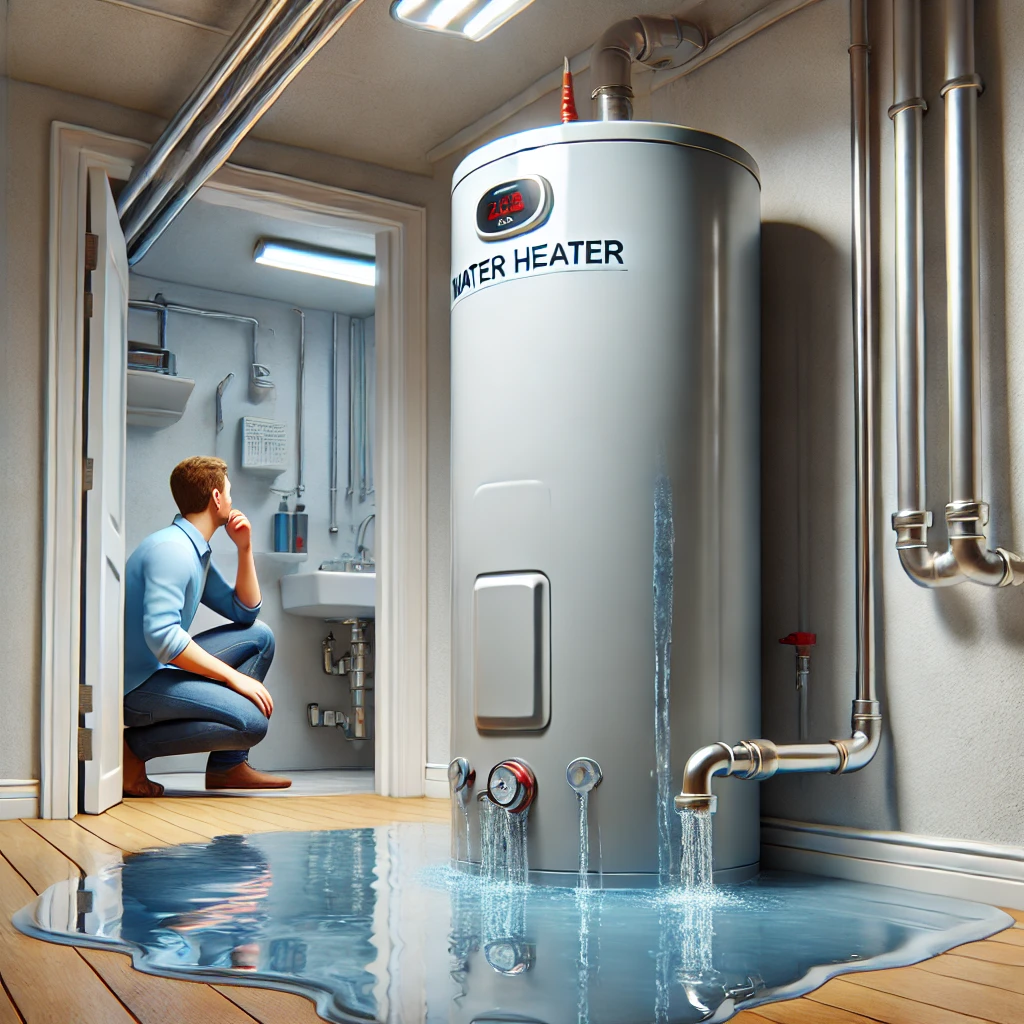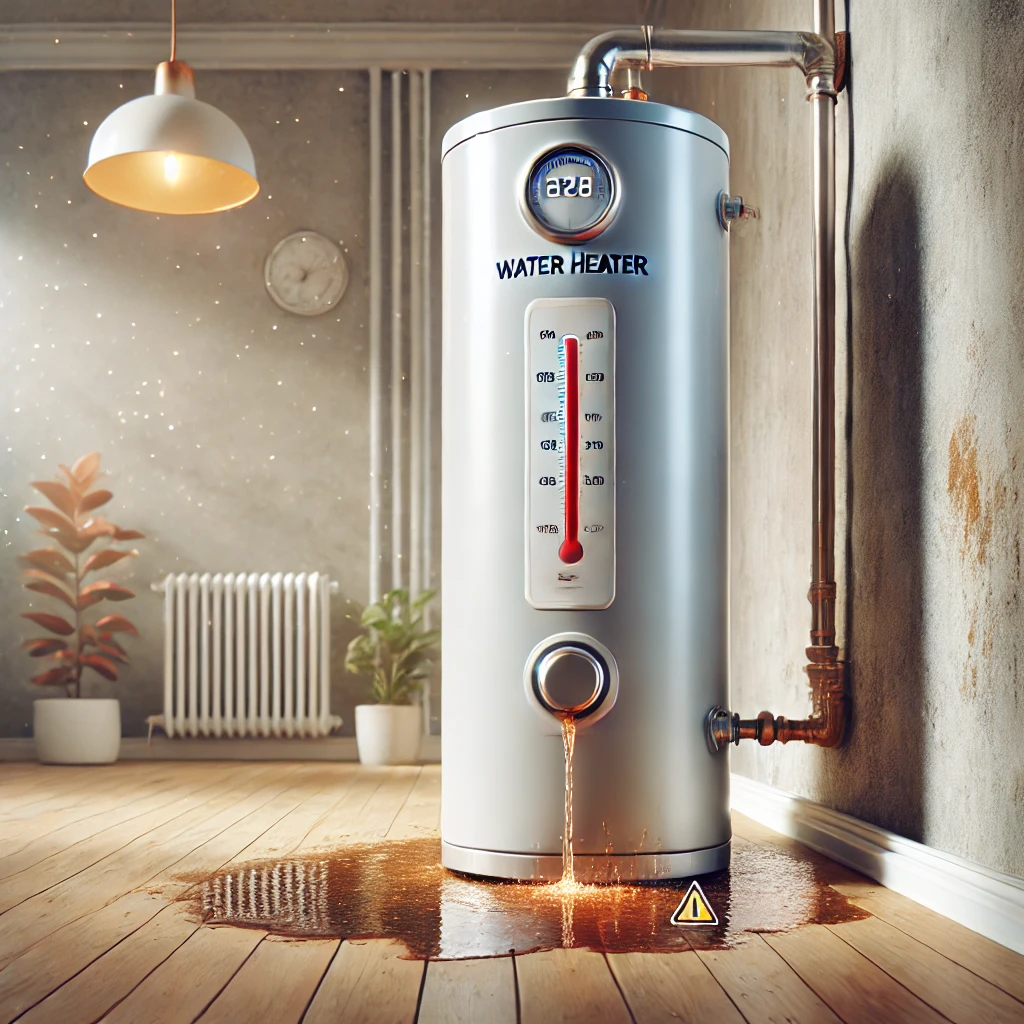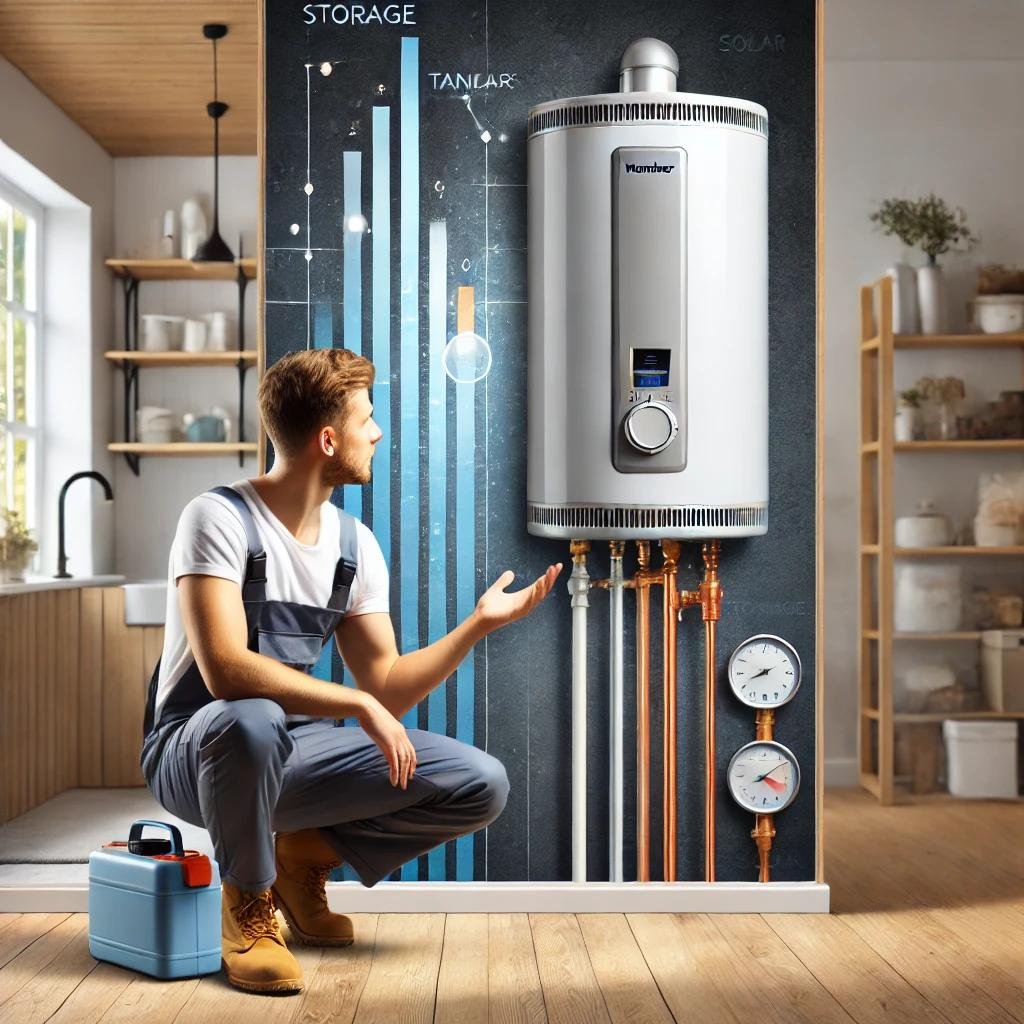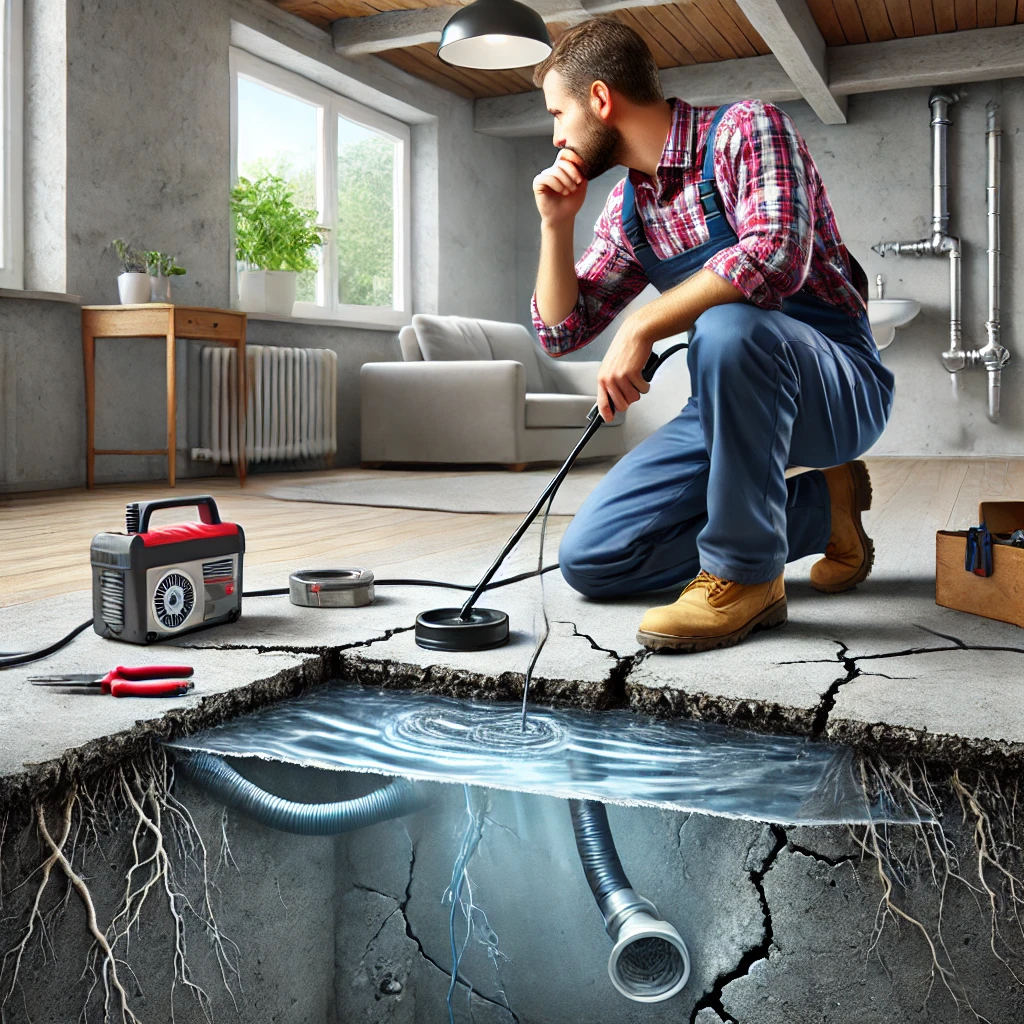A water heater is an essential appliance in every home, providing hot water for daily activities such as bathing, cooking, and cleaning. However, over time, even the most reliable water heaters can develop problems. One of the most concerning issues homeowners face is a water heater leaking from bottom. This could indicate anything from a minor valve issue to serious internal damage.
Ignoring a leak can lead to higher utility bills, water damage, and even complete system failure. Understanding the causes, identifying warning signs, and knowing the steps to take can help prevent costly repairs or replacements.
Common Causes of Water Heater Leaks
1. Sediment Buildup in the Tank
Over time, minerals and sediment from hard water settle at the bottom of the water heater tank. This buildup creates an insulating layer, causing the heating element to work harder. Excessive heat leads to cracks in the tank, resulting in leaks.
Regular maintenance, such as flushing the tank annually, can help prevent sediment buildup and extend the lifespan of the heater. If you notice a water heater leaking from bottom, excessive sediment accumulation could be the cause.
2. Loose or Faulty Drain Valve
The drain valve at the base of the water heater is used for flushing and maintenance. If the valve is not closed properly or has developed a fault, it may cause water to leak.
To check if the drain valve is the issue:
- Tighten it slightly with a wrench.
- If leaking continues, replacing the valve may be necessary.
- If corrosion is present around the valve, consult a professional plumber for further assessment.
3. Corrosion and Internal Tank Damage
Most water heaters are designed with a protective glass lining and an anode rod that prevents rust. However, as the anode rod depletes over time, rust begins to form inside the tank. Eventually, the corrosion weakens the tank walls, leading to leaks.
Once a water heater tank starts corroding internally, repair is not an option—a full replacement is the best solution. Checking the anode rod every two to three years can help extend the unit’s lifespan.
4. Malfunctioning Temperature and Pressure Relief (T&P) Valve
The T&P valve is a critical safety feature that prevents excess pressure buildup inside the tank. When the water temperature or pressure gets too high, this valve releases excess water to prevent an explosion.
If the T&P valve is leaking:
- Test it by lifting the lever and letting it snap back into place.
- If the valve continues to leak, it may be faulty and require replacement.
A constantly leaking T&P valve could indicate a pressure regulation issue. Addressing this problem promptly ensures the safety and efficiency of your water heater.
5. High Water Pressure
Water pressure that is too high can put stress on the water heater tank, pipes, and fittings. If the pressure exceeds 80 PSI, it may cause leaks or bursts.
To regulate pressure:
- Install a pressure-reducing valve (PRV) to maintain safe levels.
- Check for signs of high water pressure, such as banging pipes or water hammering noises.
Steps to Take When Your Water Heater Is Leaking
1. Turn Off the Power Supply
For electric water heaters, switch off the circuit breaker connected to the unit.
For gas water heaters, turn off the gas supply valve to prevent further risk.
2. Shut Off the Water Supply
Locate the cold water shut-off valve near the top of the water heater and turn it off to stop water from flowing into the tank.
3. Drain the Water Heater Tank
- Attach a garden hose to the drain valve at the bottom of the unit.
- Direct the hose to a floor drain, bathtub, or bucket.
- Open the drain valve and let the water flow out to reduce further leakage.
4. Inspect the Source of the Leak
Once the tank is drained, inspect:
- The drain valve for looseness or corrosion
- The pressure relief valve for excessive dripping
- The bottom of the tank for visible cracks or rust
If the leak is from a replaceable part like the valve, repair may be possible. If it’s from internal corrosion, replacement is the best option.
5. Contact a Professional Plumber
If you notice severe rust, cracks, or ongoing leaks, it’s time to call an expert. A professional plumber can assess whether repairs or a full replacement are needed.
For fast and reliable plumbing services, reach out to ASAP Heater & Plumbing to get expert guidance and assistance.
How to Prevent Water Heater Leaks
1. Flush the Tank Annually
Removing sediment buildup improves efficiency and reduces stress on the heating element.
2. Replace the Anode Rod Regularly
The anode rod prevents rust formation inside the tank. Replacing it every 2-3 years helps prevent internal corrosion.
3. Check the Pressure Relief Valve
Testing this valve periodically ensures it functions properly and prevents excessive pressure buildup.
4. Monitor for Leaks and Rust
Inspecting connections, fittings, and the bottom of the unit regularly can help catch potential issues early.
5. Upgrade to a New Water Heater When Necessary
If your water heater is 10–15 years old and leaking frequently, upgrading to a modern energy-efficient model can save on energy bills and reduce unexpected failures.
For professional installation and expert recommendations, contact ASAP Heater & Plumbing for a consultation on the best water heater options for your home.
Final Thoughts on Water Heater Maintenance
A leaking water heater is more than just an inconvenience—it can lead to serious water damage, mold growth, and costly repairs if ignored. Addressing leaks early ensures your home stays safe and your water heater operates efficiently.
Whether you need repairs, maintenance, or a full replacement, ASAP Heater & Plumbing provides trusted plumbing solutions for all your water heater concerns.






